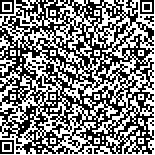| 摘要: |
| 通过人工高密度培养微拟球藻(Nannochloropsis salina),对比研究了该藻作为直接饵料在栉孔扇贝(Chlamys farreri)育苗和间接饵料在牙鲆(Paralichthys olivaceus)育苗中的应用效果。结果表明,微拟球藻生长迅速、细胞颗粒小、富含EPA等不饱和脂肪酸、营养比较全面,同时具有较厚细胞壁的特点。通过不同的光生物反应器和高密度培养技术,可以比较容易地实现微拟球藻的高密度培养,藻液细胞密度维持在5~15亿个/mL的高密度水平,最高达到36亿/mL。藻体叶绿素和类胡萝卜素含量因培养条件不同而有差异,其中每个细胞内的叶绿素含量在8.60×10-13g±0.65×10-13g,类胡萝卜素含量在1.45×10-13g±0.12×10-13g。作为直接或间接饵料,微拟球藻在不同水产动物培育中的应用效果差异性很大。其中,微拟球藻作为饵料直接投喂栉孔扇贝幼虫,虽可被摄食但不容易消化,造成食物在栉孔扇贝幼苗胃内滞留盈胀,最后出现代谢性饥饿和营养不良现象进一步影响个体生长,该藻在栉孔扇贝幼虫培育中的饵料效果不很理想。相反,利用微拟球藻培育轮虫(Rotifer),然后再将后者投喂牙鲆仔鱼,作为间接饵料微拟球藻不仅大幅提高牙鲆的成活率,同时还明显增加牙鲆的生长速度,是培育仔稚鱼开口饵料轮虫的优质微藻。微拟球藻在不同水产动物育苗中应用效果明显差异的原因,主要在于该藻是否能够被充分消化吸收。因此,有效破碎微拟球藻细胞壁技术和提高消化吸收措施都将推动该藻在水产中的应用。 |
| 关键词: 微拟球藻(Nannochloropsis salina) 饵料 栉孔扇贝(Chlamys farreri) 轮虫(Rotifer) 牙鲆(Paralichthys olivaceus) |
| DOI: |
| 分类号: |
| 基金项目:中国科学院方向性创新项目(KZCX3-SW-215);山东省科技项目(98-18) |
|
| Application of Nannochloropsis salina as feedstuff in aquaculture |
|
|
| Abstract: |
| The impacts of Nannochloropsis salina on growth and survival of Chlamys farreri and Paralichthys olivaceus larvae were conducted in Qingdao, China and Singapore during 1998~2001 by feeding dense culture of this microalga or algal fed Rotifer. The results showed that N. salina as feedstuff has a number of characteristics like fast growth, small in size, EPA and nutrients enrichment as well as a thicken cell wall. Dense cultures of N. salina ranging from 0.5× 10-9 to 1.5 × 10-9 cells/mL would be easily obtained in different photobioreactors with high density culture principles. The ultra high density of N. salina in our experiment was 3.6 × 10-9 cells/mL. Both chlorophyll and carotenoids contents varied while the cell exposed to different growth conditions. Based on our data, chlorophyll varied around 8.60×10-13 g± 0.65 × 10-13g per cell and carotenoids was about 1.45×10-13 g± 0.12 × 10-13g per cell. The applied results of N. salina obviously differed in different aquacultures due to its thick cell wall. N. salina would be ingested but un-digestible for larvae period of C. farreri. Therefore, starvation and distensible phenomena occurred and further led to a slow growth rate in C. farreri. On the contrast, N. salina fed rotifer was good for the growth and survival of P. olivaceus larvae, which indicated that this unicellular alga as an indirect feedstuff would be well applied in aquaculture. Therefore, any efficient cell wall broken technique and improvement its digestible method are required for this algal application. |
| Key words: Nannochloropsis salina feedstuff Chlamys farreri Rotifer Paralichthys olivaceus |
